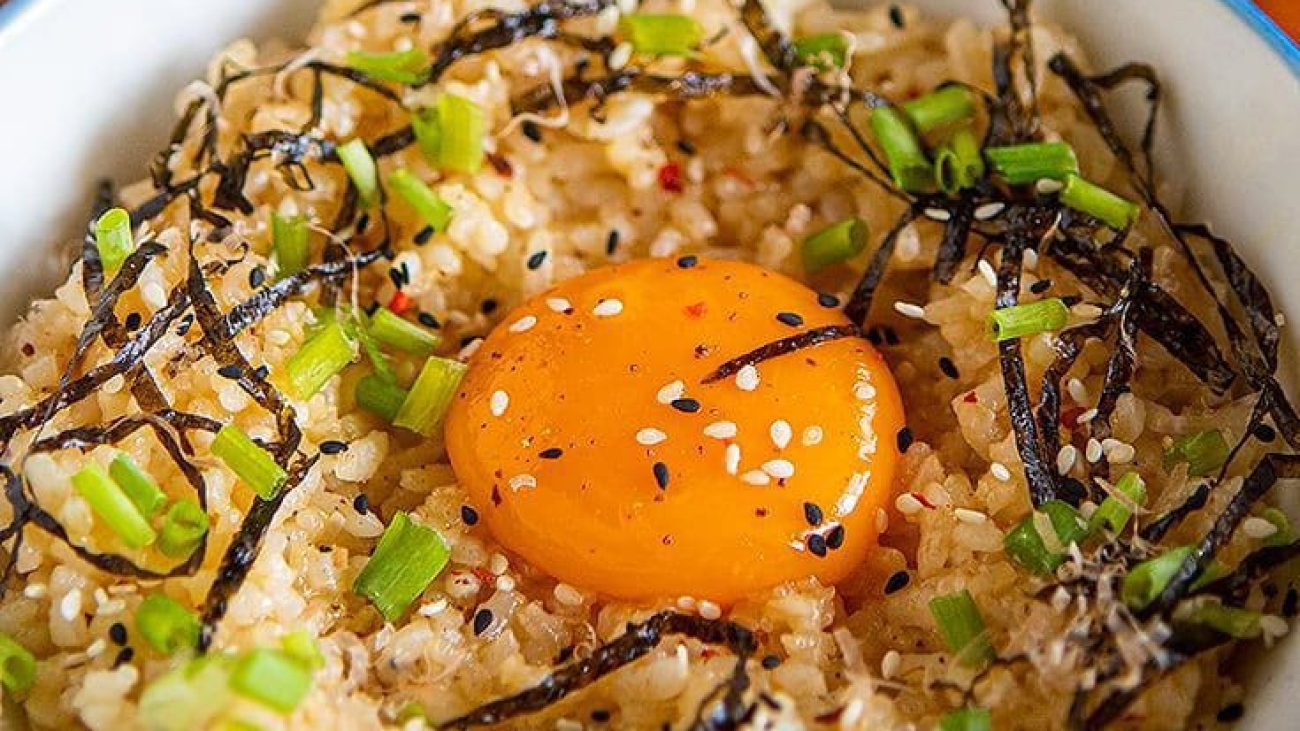Origin: Tamago Kake Gohan (卵かけご飯), often abbreviated as TKG, is a traditional Japanese breakfast that dates back to the Meiji era (1868–1912). The dish consists of a raw egg mixed into hot rice, creating a silky, creamy texture. The popularity of raw eggs in Japan is attributed to the country’s strict egg safety standards, ensuring freshness and minimal risk of contamination. TKG is widely enjoyed for its simplicity, affordability, and rich umami flavor. It is considered comfort food, commonly eaten at home but also available in specialty restaurants
Ingredients
- 1 cup freshly cooked Japanese short-grain rice (steamed and hot)
- 1 fresh egg (preferably pasteurized for safety)
- 1 tsp soy sauce (adjust to taste)
- ½ tsp mirin (optional) for slight sweetness
- 1 pinch salt (optional)
- Toppings (optional, but recommended for extra flavor):
- Chopped spring onions
- Toasted sesame seeds
- Dried seaweed (nori), finely shredded
- Bonito flakes (katsuobushi) for umami
- Furikake (Japanese rice seasoning)
Instructions:
Cook short-grain Japanese rice using a rice cooker or on the stovetop. The rice should be piping hot, as this helps to slightly thicken the egg when mixed.
Nutritional Information (Per Serving)
- Calories: 280 kcal
- Protein: 9g
- Carbohydrates: 45g
- Fats: 5g
- Fiber: 1g
Benefits
- High-Quality Protein: Eggs provide essential amino acids for muscle repair and body function.
- Low in Fat: Compared to Western breakfasts, TKG is lower in saturated fats, making it a light yet satisfying option.
- Rich in Umami: Soy sauce and bonito flakes contribute to umami flavor, making the dish deeply flavorful without excessive seasoning.
- Boosts Digestion: Fermented soy sauce contains beneficial enzymes that aid in gut health.
Tips
- Use only the egg yolk for a richer and creamier texture.
- For a thicker consistency, mix the egg with a little dashi broth before adding it to the rice.
- Pair it with miso soup and pickles for a more traditional Japanese breakfast experience.
- Try different toppings like grated daikon radish or kimchi for a fusion twist.



Add a Comment